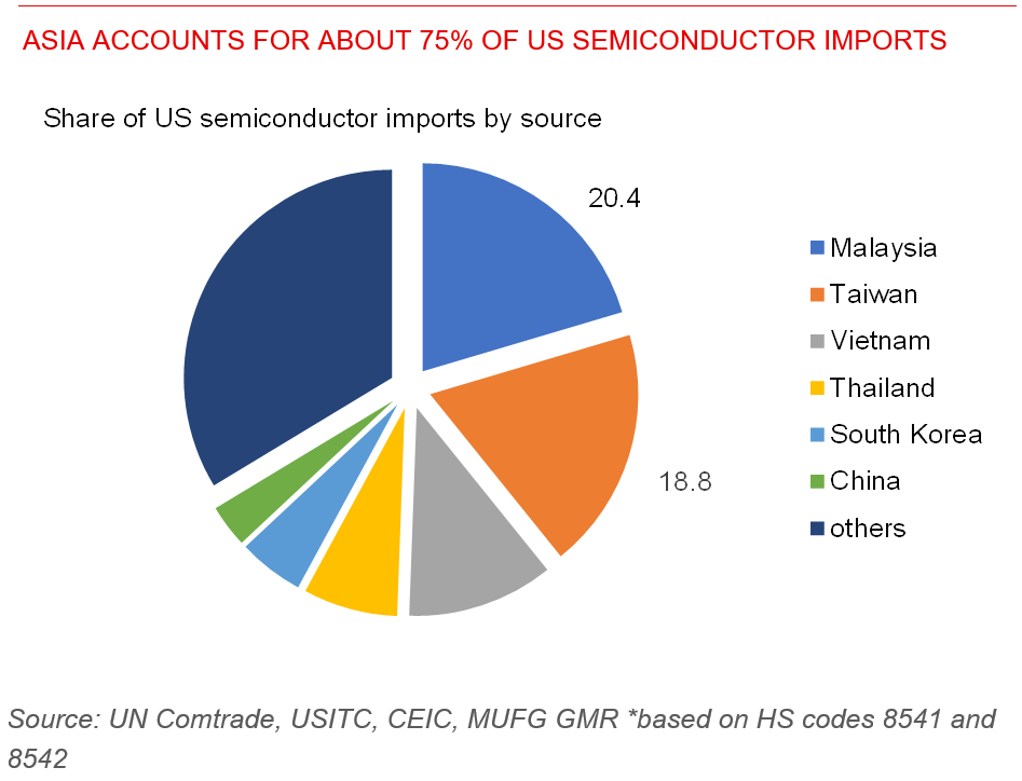Week Ahead FX outlook:
Key FX views:
US trade policy remains a major source of uncertainty, which could weigh on the outlook for the US economy and the US dollar. Tariffs continue to be a preferred instrument for President Trump, with reciprocal tariffs ranging from 10% to 41% taking effect in August. While these are broadly lower than the steep rates announced on April Liberation Day, they still exceed the 10% baseline tariffs imposed since April. This implies potential greater trade headwinds ahead. In ASEAN, most economies face reciprocal tariffs of around 19%–20%, except Singapore, which remains at the 10% baseline.
The key risk ahead lies in sectoral tariffs, particularly the 100% tariff on semiconductor imports that Trump has recently threatened. Such a high chip tariff rate is unlikely to be fully implemented, and it appears to be a tactical move to attract foreign chipmakers to invest in US chip production. But ultimately, if chip tariffs are enacted, we believe the tariff rate would likely be much lower than the current threat, with exemptions for companies that have committed to produce chips in US or are in the process of doing so. Notably, the US sources about 75% of its semiconductor imports from Asia, with Malaysia, Taiwan, Vietnam, and Thailand being key suppliers. Malaysia appears to be the most exposed, with chip exports to the US making up about 3% of its GDP. Exemptions for major players like TSMC, Samsung, and SK Hynix could help soften the blow.
The evolving tariff landscape is likely to intensify external headwinds for export-oriented Asian economies. In contrast, domestically driven economies with higher yields—such as Indonesia—may see their currencies outperform regional peers, particularly amid US dollar softness and potential Fed rate cuts. Near-term FX volatility could rise, but more policy clarity and tariff exemptions will likely help to provide buffers for regional FX.
Asia accounts for about 75% of US semiconductor imports

